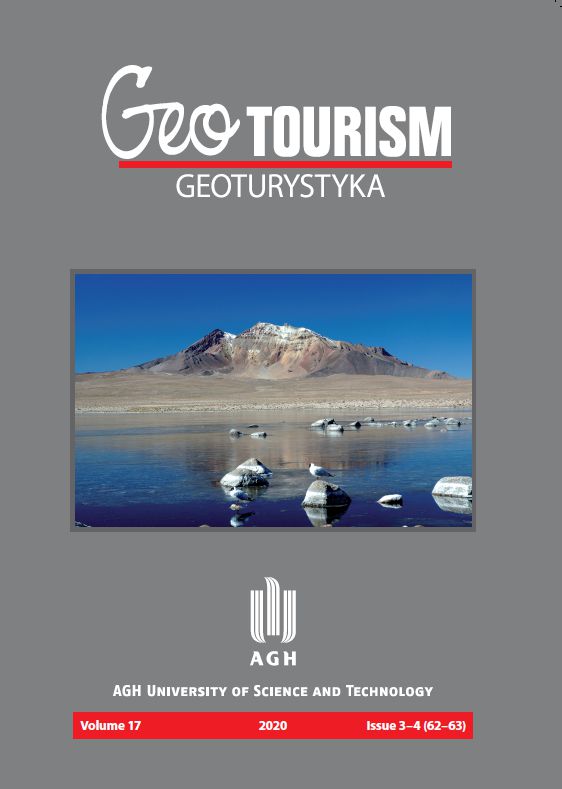Geotouristic attractiveness of the show caves of the Kraków-Częstochowa Upland area
DOI:
https://doi.org/10.7494/geotour.2020.3-4(62-63).19Abstract
In this paper, six scenic caves situated in the Kraków-Częstochowa Upland area were the subject for comparative research, considered as very essential examples of underground geotouristic attractions, displaying karst forms completely different from each other. These include: Smocza Jama Cave (Dragon’s Den) in Kraków city, Łokietek and Ciemna (Dark) Cave at Ojców, Wierzchowska Górna Cave at Wierzchowie, Nietoperzowa-Zygmunta Cave at Jerzmanowice and Głęboka (Deep) Cave at Podlesice. The first five caves are situated in the southern part of the Kraków-Częstochowa Upland and the last one, in its northern part. All of them are situated in the Silesian-Kraków Monocline. These caves developed in the Upper Jurassic (Oxfordian) massive limestones. Their karst forms are various and picturesque. Numerous animal remnants and traces of different prehistorical cultures were discovered and collected by researchers within and around three caves situated within the Kraków-Częstochowa Upland area. The geotouristic attractiveness of all six caves was demonstrated by their comparative geotourism valorisation evaluation adapted to meet tourists’, educators’ and investors’ expectations and needs. The statistical data of the annual number of visitors at these objects were also discussed. In general, interest in these caves as geotouristic abiotic nature objects has been growing regularly up until today. They have become very widely known in Poland. Moreover, the Smocza Jama Cave, associated with the Royal Castle on the Wawel Hill, and the Łokietek Cave have become very popular worldwide.
Downloads
Downloads
Published
Issue
Section
License

This work is licensed under a Creative Commons Attribution 3.0 Unported License.

The content of the journal is freely available according to the Creative Commons License Attribution 4.0 International (CC BY 4.0).


